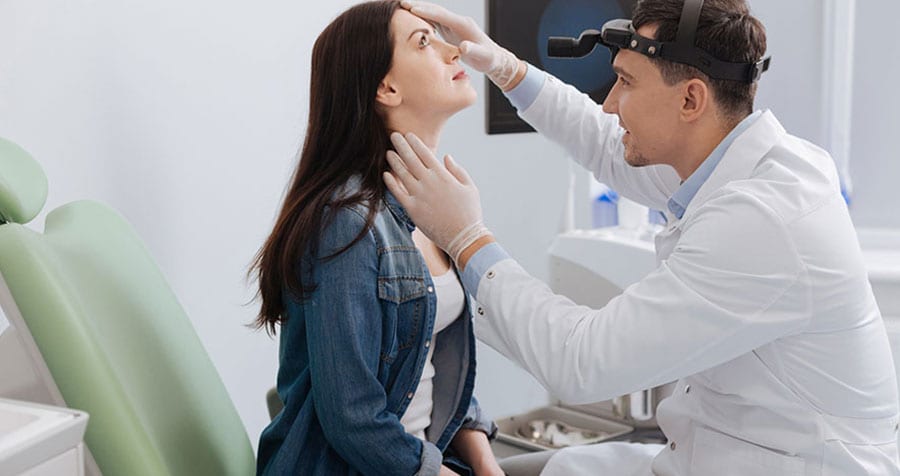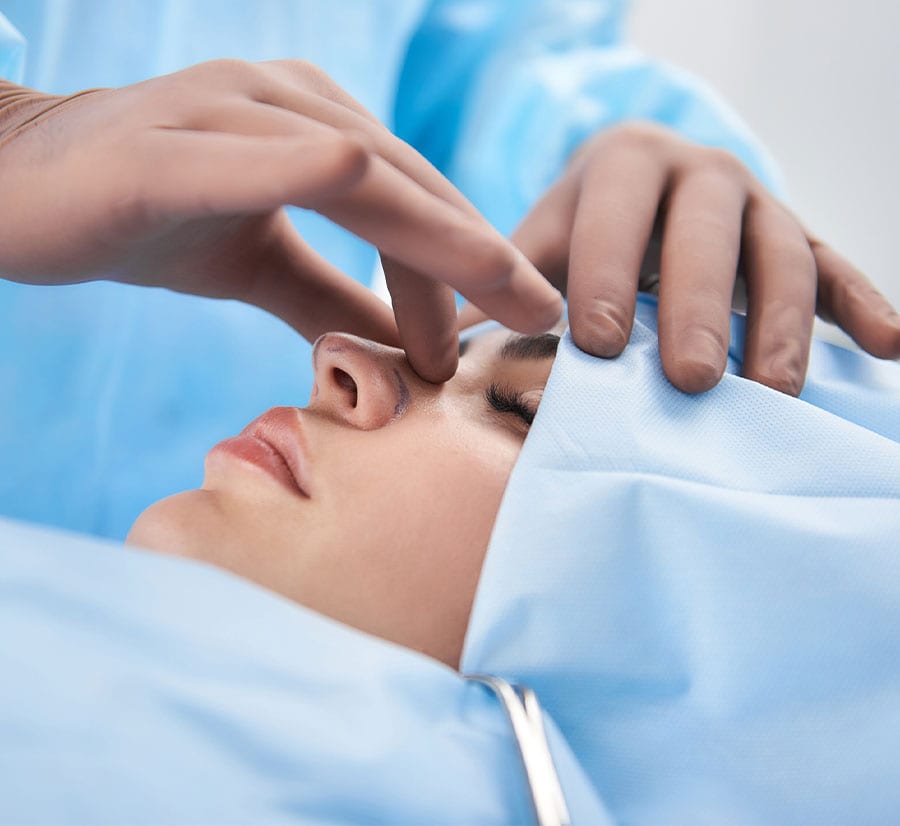
The septum is the thin wall that separates your nostrils. It is composed of cartilage and bone and is supposed to evenly divide the two nasal passages. However, it is relatively common for the septum to be crooked or displaced to one side, a condition referred to as a deviated septum. Mild cases of deviated septums cause no symptoms, but a severely deviated septum can obstruct the nasal passages and cause difficulty with breathing. The surgical procedure used to correct this problem is referred to as septoplasty and is performed by a septoplasty specialist or a general ENT surgeon.
Symptoms
Deviated septums can be congenital or caused by trauma to the nose. Since most cases of deviated septums are congenital, symptoms of a severely deviated septum most commonly affect children. However, a surprising number of patients make it through childhood without anyone ever noticing their impaired breathing and they are only diagnosed and treated as adults. Symptoms may include:
- Regular mouth breathing due to difficulty breathing through the nose
- Frequent nose bleeds
- Noisy breathing while sleeping
- Can only sleep on one side due to a blocked nasal passage
- Recurring sinus infections
- Facial pain
Diagnosis is straightforward and is usually made by an ENT observing the structure of the septum through an endoscope.


Treatment
The septoplasty specialist will surgically correct the deviated septum endoscopically, meaning a special fiber optic cable is advanced through the nose to the surgical site. A tiny camera on the end of the cable allows the septoplasty specialist to view the septum, and tiny surgical instruments are advanced through the cable to perform the procedure. The bone and cartilage forming the septum will be cut and trimmed as needed, and the septum will be repositioned in the center of the nose. If desired, a patient can have a septoplasty performed as part of a complete rhinoplasty procedure (more commonly referred to as a “nose job”). Individuals who develop a deviated septum as a result of trauma may require a rhinoplasty in addition to a septoplasty in order to repair the damage to their nose. A rhinoplasty is a more complicated and invasive procedure than a septoplasty and is usually performed by a cosmetic surgeon rather than a septoplasty specialist.
Recovery
After the surgery, the nose is usually packed and splinted to support the septum while it heals. Most patients can go home the same day as the septoplasty procedure, but patients should expect to rest for around a week before returning to work or school. It is important to avoid strenuous activity for around five weeks after the surgery. However, because bone and cartilage were cut during the procedure, full healing may take up to six months. Most patients find their obstructed breathing and other symptoms are relieved by a septoplasty. Others continue to suffer from recurrent sinus infections and obstructed breathing and may require additional sinus surgery to improve drainage of the sinuses or to trim enlarged turbinates.
